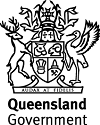Published Monday, 16 February, 2009 at 04:10 PM

Minister for Health
The Honourable Stephen Robertson
Kingaroy Hospital Emergency Department very busy
Queensland Health’s performance report for December 2008 quarter shows more people are presenting to the Emergency Department at Kingaroy Hospital.
Health Minister Stephen Robertson said the increased activity demonstrated the impact of the additional $10 billion Health Action Plan funding which is expanding the capacity of our public hospitals throughout Queensland.
Mr Robertson said the sustained increase in presentations could be attributed to the hospital’s full medical and nursing staffing establishment.
“A total of 3195 people presented to the Emergency Department in the three months to the end of the year, a jump of 507 patients or 18.9% compared with the same period the year before,” he said.
“Because of the increase in presentations, the hospital is planning to establish a primary care clinic at the department.”
Mr Robertson said the number of outpatient services provided decreased slightly, most likely because the gynaecology clinic ceased when the obstetrics and gynaecology specialist finished his contract at the hospital in November.
Mr Robertson said the hospital expected to recruit a replacement this year at which time it would recommence the clinic.
The arrival of a proceduralist at the hospital late last year to conduct Category 1, 2 and 3 endoscopies resulted in a slight increase in procedural activities.
In comparison with the same period a year earlier, there was a slight increase in the number of babies born, with 112 new members of the community of South Burnett.
In the three months to December 31, 2008, compared to the same quarter in 2007, Queensland hospitals provided:
• A 3.2 per cent increase (or 11,744 more patients) in the number of people treated in emergency departments
• A 5.9 per cent increase (or 12,284 more patients) in the number of people admitted to hospital
• An 8.4 per cent increase (or 8,520 more patients) in the number of people admitted for same day care in a hospital
• A 3.6 per cent increase (or 3,764 more patients) in the number of people admitted for more than one day
• A 0.4 per cent increase (or 3,074 more appointments) in the number of outpatient services provided
• A 6.8 per cent increase (or 1,950 more patients) in the number of people receiving elective surgery, and
• A 4.8 per cent increase (or 482 more babies) in the number of babies born
Mr Robertson said staffing continued to grow strongly. Since 2005 Queensland Health has employed:
- 1,715 more doctors, a 38 per cent increase to 6,267
- 5,778 more nurses, a 26 per cent to 27,689, and
- 2,134 more health practitioners, professional and technical staff, up 31 per cent to 9,068.
Mr Robertson said the quarterly performance report reflected the hard work and commitment of the dedicated Queensland Health staff across the state, and he commended their efforts in providing quality health care to people in their communities.
For more information the Queensland Public Hospitals Performance Report December Quarter 2008 is now available on Queensland Health’s website at www.health.qld.gov.au under the “What’s New” section.
Definitions:
Outpatient services provided = the number of outpatient and other non-admitted services minus services such as emergency, pharmacy, pathology, diagnostic imaging, community health services, district nursing services and other outreach services.
People treated as inpatients or emergencies = the number of admitted patient episodes plus the number of emergency services not resulting in admission. For example, some people will attend the Emergency Department and then be admitted to hospital. These people will only be counted once as inpatients and not counted as emergency patients for this particular figure.
People admitted to hospital = the number of admitted patient episodes of care. For example, one person might be admitted to hospital on two separate occasions, they would then be counted as two episodes of care.
People treated in emergency departments = the number of accident and emergency services provided. For example, a patient attends emergency three times, then it is counted as three separate attendances to the emergency department.
People received elective surgery = the number of people admitted for elective surgery from the elective surgery waiting list in either Category 1, 2 or 3.
Category 1 – Urgent
Admission within 30 days desirable for a condition that has the potential to deteriorate quickly to the point that it may become an emergency.
Category 2 – Semi-urgent
Admission within 90 days desirable for a condition causing some pain, dysfunction or disability, but which is not likely to deteriorate quickly or become an emergency.
Category 3 – Non-urgent
Admission at some time in the future acceptable for a condition causing minimal or no pain, dysfunction or disability, which is unlikely to deteriorate quickly and which does not have the potential to become an emergency.
Long-wait
Term applied to any waiting time that exceeds the recommendation for that category.
ENDS
MEDIA: Kate Van Poelgeest 3234 1185 or 0458 449 267

